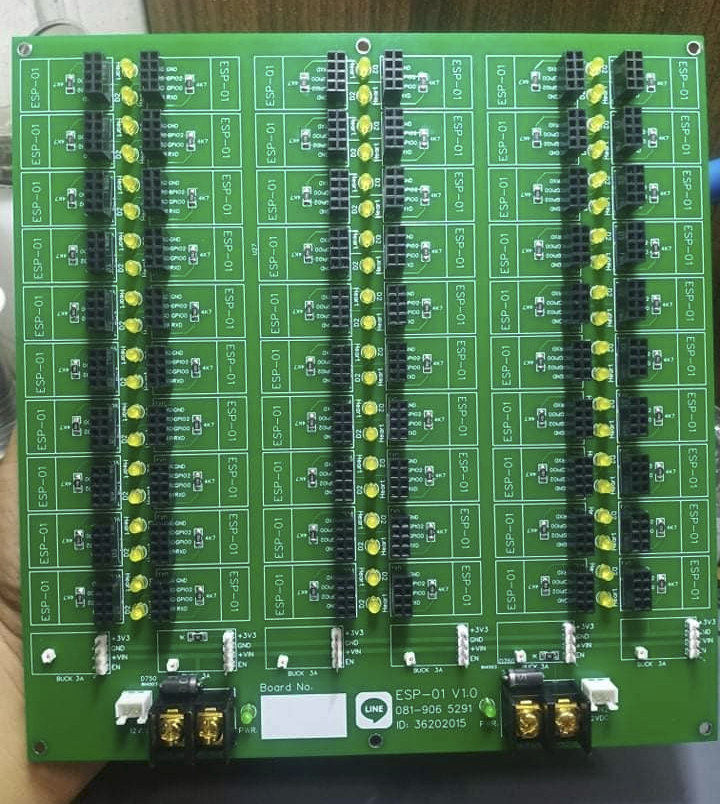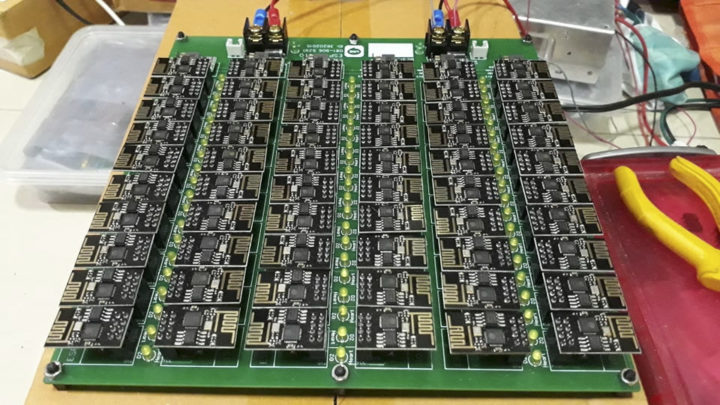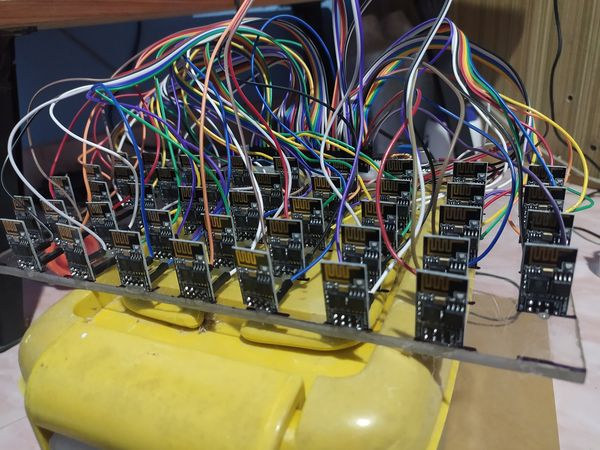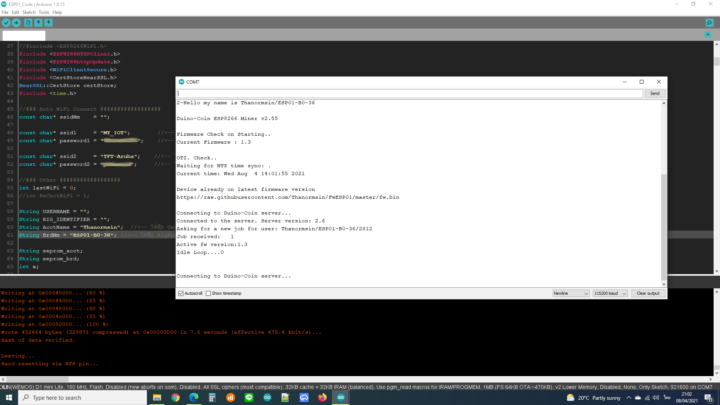When I first saw the large ESP-01 V1.0 board on Facebook, I thought it was designed to speed up firmware updates of up to 60 ESP-01 modules. The developer, Thanormsin, just explained it would take 5 to 24V DC input to power all ESP8266 attached to it.
It looks cool to have so many But there was no PC interface to update the firmware, so it did not make sense to me, even if it could be used for OTA firmware updates, as the first time, one would have to manual update the firmware.
So I discussed with Thanormsin, and he explains to me his initial arrangement was a cable mess.
That is why he designed a board to make it neater, and easier to manage. Each ESP-01 module can update firmware from the Internet, more especially from Github, as each time a new firmware version is uploaded to Github, the wireless module will automatically download and upgrade to the latest firmware.
He adapted the code from programmer131’s ESP8266_ESP32_SelfUpdate repository that flash code to ESP8266 or ESP32 hardware from a firmware file stored in Github.
That’s only once he shared a screenshot of his Arduino IDE windows, that I understood the board was meant to mine Duino coins. I had seen a few people play around with Duino coin and Chia on Facebook in recent months, but I did not immediately make the connection.
Duino coin is designed to be mined on low-cost hardware like Arduino, ESP8266/ESP32, Raspberry Pi, and so on. There’s a self-hosted exchange to convert Duino Coin into other cryptocurrencies like Bitcoin Cash or Ripple. The developer says that Litecoin, Ethereum, Bitcoin, Dogecoin, or other coins with high fees won’t be added to the exchange.

Jean-Luc started CNX Software in 2010 as a part-time endeavor, before quitting his job as a software engineering manager, and starting to write daily news, and reviews full time later in 2011.
Support CNX Software! Donate via cryptocurrencies, become a Patron on Patreon, or purchase goods on Amazon or Aliexpress








